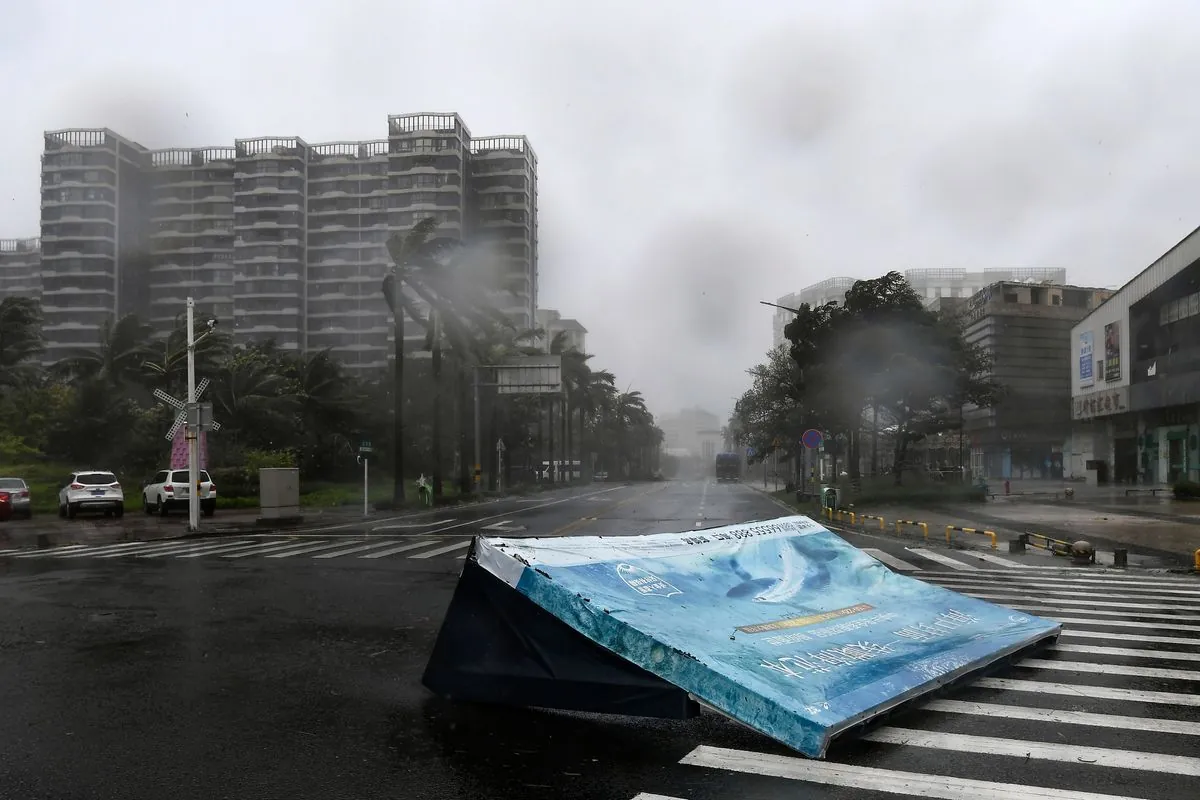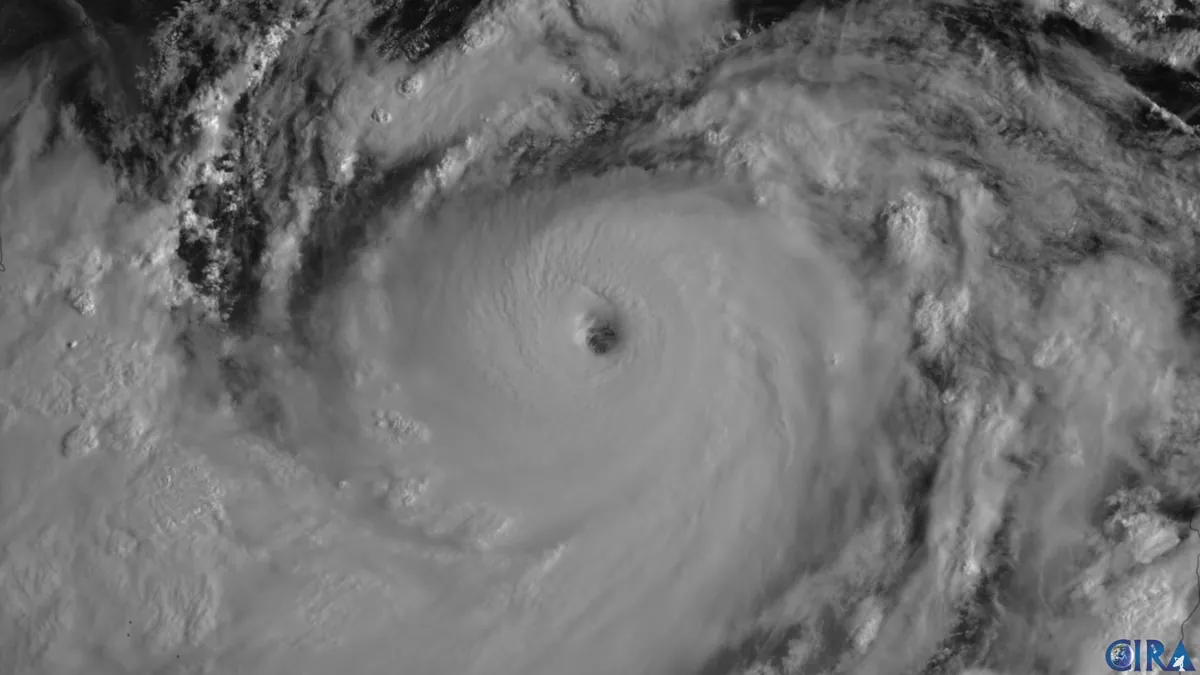Deadly Typhoon Yagi Wreaks Havoc in Southern China, Heads to Vietnam
Typhoon Yagi, one of the most powerful in recent years, has caused deaths and widespread damage in southern China. The storm is now moving towards Vietnam after affecting millions across the region.

Typhoon Yagi, a powerful storm system, has left a trail of destruction across southern China, resulting in two fatalities and injuring at least 92 individuals on the island of Hainan. The typhoon, which made landfall yesterday, has caused significant disruption, including power outages affecting over 800,000 households.
Yagi, described by Vietnamese authorities as "one of the most powerful typhoons in the region over the past decade," is currently moving towards northern Vietnam over the Gulf of Tonkin. The Gulf, a body of water situated between northern Vietnam and southern China, is bracing for the storm's impact.
The typhoon struck Wenchang city in Hainan on Friday afternoon, with wind speeds reaching approximately 245 kph (152 mph) near its center. China's national meteorological authorities have classified Yagi as the strongest autumn typhoon to make landfall in the country. This classification is based on the Saffir-Simpson Hurricane Wind Scale, which categorizes tropical cyclones according to their sustained wind speeds.

In preparation for the typhoon's arrival, Chinese authorities implemented extensive evacuation measures. Approximately 420,000 residents were relocated in Hainan, while an additional half a million people were evacuated from Guangdong province before Yagi made a second landfall in Xuwen County on Friday night. These large-scale evacuations highlight the critical importance of disaster management strategies in minimizing casualties during severe weather events.
The impact of the typhoon extended to Hong Kong, where more than 270 people sought refuge in temporary government shelters on Friday. The city's tropical cyclone warning system was activated, leading to the cancellation of over 100 flights. The storm's effects were felt across various sectors, with heavy rain and strong winds causing dozens of trees to fall. Additionally, trading on the Hong Kong Stock Exchange, which is Asia's third-largest in terms of market capitalization, was halted along with bank services and schools.
"Due to the proximity of Typhoon Yagi, the Hong Kong Observatory has issued the Orange typhoon signal. Residents are advised to stay indoors and avoid unnecessary travel."
Prior to reaching China, Yagi had already caused significant damage in the Philippines. The storm, still at tropical storm strength when it exited the northwestern part of the country on Wednesday, left at least 16 people dead and 17 others missing. The casualties were primarily due to landslides and widespread flooding, which are common secondary hazards associated with typhoons in mountainous regions. The storm affected more than 2 million people across the Philippine archipelago, displacing over 47,600 individuals from their homes.
As Yagi continues its path towards Vietnam, meteorological agencies are utilizing advanced computer models and satellite data to predict its trajectory and potential impact. The storm's intensity serves as a stark reminder of the increasing power of tropical cyclones, which some scientists attribute to climate change.
The aftermath of Typhoon Yagi will likely necessitate significant recovery efforts, potentially involving international aid and cooperation. As affected regions begin to assess the damage, the focus will shift to rebuilding infrastructure and restoring power to the hundreds of thousands of households currently without electricity.
This event underscores the vulnerability of coastal and island communities to extreme weather events and the ongoing need for improved disaster preparedness and response strategies in the face of increasingly powerful storms.


































